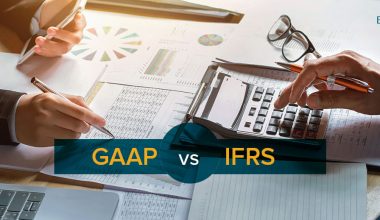Accounting is a critical component of running a successful business. Business executives can ensure fiscal stability by closely monitoring liabilities, assets, and other financial issues. Learning about liabilities and how they relate to good company operations will help you flourish in finance, accounting, or a similar career. Here’s all you need to know:
What Is Liability?
A liability is a debt that a business owes to others in simple accounting or commercial terms. This is different from legal liability, which holds a business owner liable for the damage or losses inflicted on others. Businesses use liability accounts to keep track of unpaid bills owed to suppliers, clients, or employees. Liabilities can be settled by offering payments, goods, or services.
It is critical that a company’s assets, or the money it owns or owes others, outweigh its liabilities. Thus, the company’s financial position will remain constant. Accountants include liabilities on a company’s balance sheet to provide shareholders with information about the company’s financial health.
Different Types of Liabilities
Businesses categorize their liabilities into two groups: current and long-term. Current liabilities are debts due within a year, whereas long-term liabilities are debts due over a longer period of time. For example, if a company takes out a 15-year mortgage, that is considered a long-term liability. Mortgage payments due during the current year, on the other hand, are considered the current portion of long-term debt and are represented in the balance sheet’s short-term liabilities column.
#1. Current Liabilities (Short-Term)
Analysts prefer to verify that a business can pay current bills due within a year with cash. Payroll expenses and accounts payable, which include money owing to vendors, monthly utilities, and similar expenses, are examples of short-term liabilities. The following are some other examples:
Wages Payable
The total amount of money that employees have generated but have not yet received Because most businesses pay their employees every two weeks, this liability changes frequently.
Payment of Interest
Companies, like individuals, frequently use credit to fund the acquisition of products and services over short time periods. This is the amount of interest that must be paid on short-term credit purchases.
Dividends to be paid
This indicates the amount owed to shareholders after the dividend was announced by corporations that have issued shares to investors and pay a dividend. This period lasts around two weeks, thus this duty appears four times every year until the dividend is paid.
Unearned Income
This is a company’s obligation to supply goods and/or services at a later date after receiving upfront payment. Once the product or service is provided, this sum will be lowered with an offsetting entry.
Discontinued Operations Liabilities
This is a one-of-a-kind liability that most people overlook but should investigate further. Companies must account for the financial impact of an operation, division, or entity that is now for sale or has previously been sold. This includes the financial impact of a product line that is currently or has recently been discontinued.
#2. Long-Term (Non-Current) Liabilities
Given the name, it’s evident that any responsibility that isn’t current fits under non-current liabilities, which are scheduled to be paid in 12 months or later. Referring back to the AT&T example, there are more items than your typical corporation, which may just mention one or two items. Long-term debt, also known as bonds payable, is typically the most significant liability and appears at the top of the list.
Companies of all sizes finance a portion of their long-term operations by issuing bonds, which are basically loans from each party who buys the bonds. As bonds are issued, mature, or are called back by the issuer, this line item is always changing.
Analysts are looking for evidence that long-term liabilities may be met with assets acquired from future revenues or financing transactions. Bonds and loans are not the only long-term liabilities that businesses face. Rent, deferred taxes, wages, and pension obligations are all examples of long-term liabilities. Other examples are:
Warranty Liability
Some liabilities cannot be as precise as AP and must be calculated. It is the projected amount of time and money that will be spent fixing products if a warranty is agreed upon. This is a typical liability in the automotive sector, as most vehicles have lengthy warranties that can be expensive.
Contingent Liability Assessment
A contingent liability is one that may arise as a result of the outcome of an uncertain future occurrence.
Deferred Credits
This is a broad category that can be classified as current or non-current based on the transaction details. These credits are essentially revenue collected before it is recorded on the income statement as earned. Customer advances, deferred revenue, or a transaction in which credits are owed but not yet recognized revenue are all examples. When the income is no longer delayed, the amount generated is deducted from this item, and it becomes part of the company’s revenue stream.
Post-Employment Advantages
hese are retirement benefits that an employee or family member may receive, which are carried as a long-term obligation as they accrue. In the case of AT&T, this accounts for one-half of total non-current debt, second only to long-term debt. With escalating health-care costs and deferred compensation, this issue should not be neglected.
UITC (Unamortized Investment Tax Credits)
This is the difference between an asset’s historical cost and the amount already depreciated. The unamortized component of the asset is a liability, but it is merely an approximate estimate of its fair market worth. For an analyst, this provides information on how aggressive or conservative a company’s depreciation techniques are.
Examples of Liabilities
The following are some examples of frequent company liabilities:
#1. Accounts payable
Accounts payable is a component of a company’s general ledger that shows the amount owed but not yet paid. Suppliers, vendors, or other businesses issue invoices in exchange for goods or services provided. Accounts payable appear on the balance sheet as the total of all amounts owed. Accountants include changes in accounts payable from past fiscal periods in the cash flow statement to shareholders.
#2. Accrued Liabilities
Accrued liabilities emerge when a company incurs a cost that has yet to be billed. These are classified as either short-term or long-term liabilities by accountants. Although no money has been transferred, accountants create this entry to keep track of spending during the accounting period in which it occurred. When a business gets an invoice, accounting software makes an automated reversal entry to cancel out the accrual. A purchase order can be used to calculate the amount of the accrual.
Accrued liabilities include the following:
- Compensation owed to employees
- Outstanding loans
- Payroll taxes
- Pension plan benefits
#3. Bank account overdrafts
Overdrafts are small advances that a bank gives to a business so that it can conduct transactions. This happens when the balance in an account falls below zero. A current liability is an overdraft. Because it is a short-term loan, it is usual for firms to consider it positive cash flow until it is paid off. This usually happens at the end of a period when there is an overdraft.
#4. Customer deposits
Customers’ payments paid in advance of obtaining goods or services are liabilities. If the company fails to supply the services, goods, or products, it must return the cash. The company still owes the customer, hence it is a form of liability.
#5. Dividends payable
Dividends are sums of money that a company pays to its shareholders. They are paid to investors based on the percentage of stock owned in the company by business leaders when profits are allocated. They open a dividends payable account as a current liability until the fund is distributed.
#6. Employee income tax withheld
Organizations with employees are required by law to pay taxes to the federal government. Employee income tax withheld is the amount owed to the government by the employer at the end of each pay cycle. In the United States, the following taxes are withheld:
- Federal income taxes
- Medicare
- Social Security
- State income taxes, which differ by state
- Unemployment tax
A firm may be required to pay additional taxes depending on the state. The Internal Revenue Service determines the frequency of payroll tax payments based on the size of the firm. Taxes can be paid annually, biannually, monthly, bimonthly, or weekly by entities.
#7. Mortgage payable
A mortgage is a loan used to purchase an asset such as land, property, or a structure. A mortgage loan is made up of three sections that are classified differently in financial statements:
- Interest
- Principle to be paid within 12 months
- Remaining principal of the loan
Accountants treat loan interest as an expense and record it on the income statement. They regard the loan principle must be paid off within 12 months to be a current debt. The remainder of the loan principal is regarded as a noncurrent, long-term debt. Finally, mortgages paid on a required day are usually considered a cost for that month.
#8. Potential lawsuits
A contingent liability is an example of a potential lawsuit. Accountants include pending cases in financial statements as a footnote. It must meet the following two characteristics in order to be recognized:
- The compensation amount is reasonably estimable.
- The case is very likely to be filed.
#9. Product warranty
A product warranty is another example of contingent liability because the issuing company has no way of knowing how many returns will occur. Customers receive guarantees from businesses, but these agreements are rarely enforced. The company deducts an estimated amount from warranty expenses and credits it to contingent liabilities. Accountants amend the books at the conclusion of the accounting period to reflect the true amount of honored warranties.
#10. Salaries payable
Salaries payable is a current liability account that represents the amount owed to employees in the following payroll cycle. It is the sum owing to employees that a corporation has not yet paid. Accountants record this total on the balance sheet. Salaries payable are distinct from salaries expense on the income statement. Salaries are the total amount paid to all salaried employees in a particular period. The payable account, on the other hand, is merely the amount owed at the conclusion of the quarter.
#11. Unearned revenue
Unearned revenue is an example of a current liability that consists of services rather than money. The income is a cash advance based on the trade of future commodities or services. Accountants balance the entry and recognize the obligation as income after completing the agreement. Unearned revenue examples include:
- Advanced retainer fees for legal services
- Payments for subscriptions services
- Prepaid insurance
- Rent paid in advance
- Payments for subscriptions services
Assets vs. Liabilities
Assets are tangible objects such as buildings, machinery, and equipment, as well as intangible items such as accounts receivable, interest owing, patents, or intellectual property that a firm owns or owes to the company.
When a company’s liabilities are subtracted from its assets, the difference is its owner’s or stockholders’ equity. This connection can be stated as follows:
Owner’s Equity = Assets – Liabilities
However, in most circumstances, this accounting equation is expressed as follows:
Assets=Liabilities+Equity
Liabilities vs. Expenses
An expense is the cost of operations incurred by a business in order to earn revenue. Expenses, unlike assets and liabilities, are tied to revenue and are both shown on a company’s income statement. In a nutshell, expenses are utilized to compute net income. By deducting revenues from expenses, one can calculate net income.
For example, if a company’s expenses have exceeded its income for the past three years, it may indicate a lack of financial stability because it has been losing money throughout that time.
Expenses and liabilities should not be used interchangeably. The obligations are recorded on a company’s balance sheet, whereas the assets are listed on the income statement. Expenses are the costs of running a business, whereas liabilities are the commitments and debts owed by the business. Expenses might be paid in cash right away, or they can be postponed, resulting in a liability.
What is Liabilities in Accounting?
In accounting, liability refers to any type of financial obligation that a company must pay to another person or company at the end of an accounting period. Financial advantages such as money, products, or services are used to satisfy liabilities.
What Are Liabilities in Business?
The legal debts that a company owes to other creditors are its liabilities. Accounts payable, notes payable, and bank debt are all examples. In order to operate and expand, all businesses must incur liabilities. A company’s foundation is stable when its obligations and equity are properly balanced.
What is Asset in Accounting?
An asset is a resource having monetary worth that an individual, organization, or country possesses or manages with the prospect of future gain. A company’s assets are reflected on its balance sheet. They are divided into four categories: current, fixed, financial, and intangible.
- ACCOUNTS PAYABLE JOB DESCRIPTION: What You Should Know
- TAXES ON 401K WITHDRAWAL: Everything You Should Know!!!
- LIABILITIES: Meaning & What You Should Know
- ACCOUNTS PAYABLE PROCESS: How to Manage the Process Effectively






